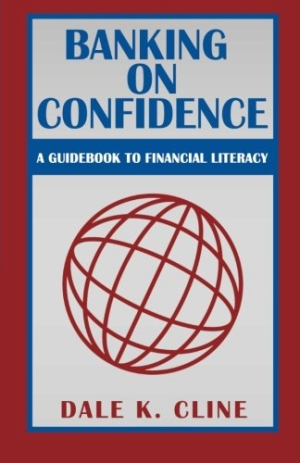Banking on Confidence
A Guidebook to Financial Literacy
Cline offers an authoritative, well-written overview of how the American economy functions.
CPA/CMA Dale K. Cline explains the workings of the American economy in simple, clear terms in his book Banking on Confidence: A Guidebook to Financial Literacy.
Cline begins with a discussion of the economy’s “three pillars”: confidence, monetary policy, and fiscal policy. Cline then covers basic accounting principles and explains the most common financial statements. He follows this with an informative chapter concerning the way in which the Federal Reserve Bank and the US Treasury Department work together to regulate the economy. Next, he explains how banks operate. While most readers might assume their primary role is accepting deposits of customers, Cline points out that supplying credit to customers is the banks’ real value; “by creating credit,” writes Cline, “banks create spending power.”
Cline moves beyond the American economy to also address global currency, as well as the status of the US dollar as the world’s “reserve currency.” Perhaps most interesting on the international monetary front is the chapter entitled “The Great China Sterilization Problem.” Here, Cline writes about “currency sterilization,” which he defines as “the practice of intervening in the foreign exchange market with the intention of maintaining the value of one currency relative to another, while also attempting to curb growth in the monetary base.” This common banking practice in China “hurts the rest of the developed world badly and will eventually damage China itself,” according to the author.
In Part II of the book, Cline chooses to examine three specific areas—real estate, oil, and gold—that he says are commonplace to all readers, but each of which “is unique in some way regarding value.” In discussing real estate, the author not only covers the basics, but he also does an admirable job of explaining its role in the financial crisis of 2008. Particularly timely is his discussion of oil and how its value affects gasoline prices. As for gold, Cline is skeptical of those who are calling for the readoption of the “gold standard” that once backed the currency of the United States; he suggests such action “would likely not change economic behavior.”
Banking on Confidence is easy to comprehend, even if its content is somewhat dry. Cline writes in a style that is appropriate for the average reader, and he is adept at explaining complex economic concepts. He offers uncomplicated definitions of such economic terms as GDP, seigniorage, inflation, and quantitative easing. The page design adds to the readability. While the front cover is simple, it does not detract from the book. The author includes a section of suggested reading at the end, but an index might have been useful. This is an informative book by a well-informed expert.
Reviewed by
Barry Silverstein
Disclosure: This article is not an endorsement, but a review. The publisher of this book provided free copies of the book and paid a small fee to have their book reviewed by a professional reviewer. Foreword Reviews and Clarion Reviews make no guarantee that the publisher will receive a positive review. Foreword Magazine, Inc. is disclosing this in accordance with the Federal Trade Commission’s 16 CFR, Part 255.

